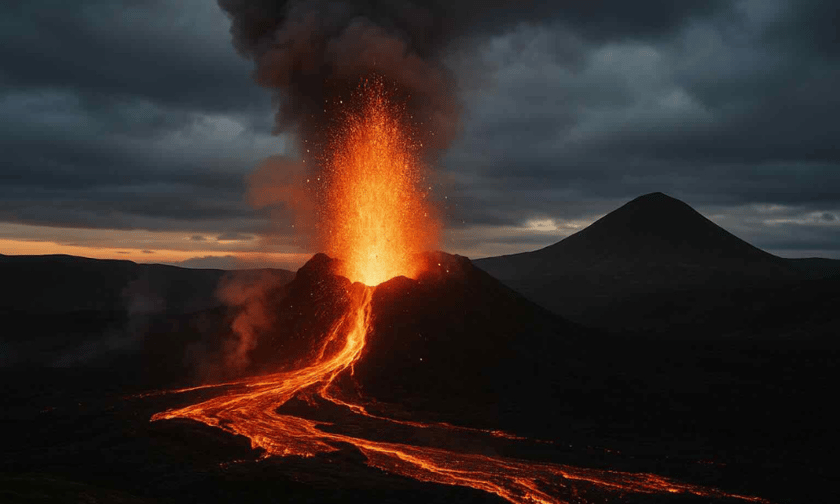



The Sundhnúkur volcano on Iceland’s Reykjanes Peninsula erupted in the early hours of Wednesday morning, sending plumes of smoke and molten lava into the night sky and prompting the evacuation of residents and tourists from several sites, including the Blue Lagoon spa resort and the fishing town of Grindavík.
This marks the ninth eruption from Sundhnúkur in a mere 19 months, part of an ongoing and volatile geological awakening on the peninsula, which has now recorded 12 eruptions since 2021. The Icelandic Meteorological Office (IMO) described this latest event as “moderate in scale,” noting that early GPS and deformation data suggested limited impact on infrastructure - though authorities remain vigilant.
The eruption, which occurred near Litla-Skógfell, was preceded by limited seismic activity, offering little forewarning. Emergency protocols were swiftly enacted, with police urging residents to vacate properties in Grindavík - a town that has largely remained deserted since an evacuation order was issued in 2023.
Among the locations evacuated was the Blue Lagoon, a luxury geothermal spa popular with British and European visitors. Although flights at nearby Keflavík International Airport remained unaffected, the event is another reminder of the fragility of Iceland’s tourism-dependent economy amid frequent natural disruption.
Authorities have warned residents in the towns of Vogar and Reykjanesbær to keep windows closed due to drifting volcanic gases. Meanwhile, the fissure, estimated at up to a kilometre in length, continues to emit lava that - while not currently threatening homes - could encroach upon the key Grindavíkurvegur route if the activity persists.
For insurers with exposure to Icelandic risk, the ongoing sequence of eruptions presents a growing challenge. Last year’s volcanic and seismic activity in Grindavík alone resulted in insured residential property losses of 6.9 billion ISK (approximately £40 million), according to Iceland’s Natural Catastrophe Insurance (NTI). Broader infrastructure assessments are still underway, with damage to utility networks, commercial assets and port facilities potentially bringing the final tally to upwards of 17 billion ISK.
“It’s not the tremors, but the deformation of the land - causing structural warping and foundational collapse - that accounts for the most severe losses,” said Jón Örvar Bjarnason, a senior NTI official, during a recent risk seminar hosted by the Association of Icelandic Engineers.
The ongoing eruptions are primarily fissure-based, whereby lava is expelled through linear cracks rather than a central vent. While these events have so far spared Iceland’s capital and have not disrupted transatlantic air travel - a critical consideration for reinsurers - experts warn the Reykjanes system could remain active for decades or more.
While this latest eruption has not produced a major insurance event in itself, it serves as a continuing stress test for both national disaster schemes and private reinsurers underwriting catastrophe exposure in Iceland. Given the compounding nature of the eruptions, underwriters may need to reassess cumulative risk assumptions across sectors including tourism, energy, and transportation.
For the time being, however, the Icelandic authorities are urging calm. “This is not a major event at the moment,” said Benedikt Ófeigsson, head of deformation measurements at the IMO. “There is always seismic activity, but nothing extreme at present.”
Nonetheless, as lava continues to flow and sulphur emissions drift across inhabited areas, the situation remains under close watch.

Unlock powerful dashboards and industry insights with IB+ Data Hub—your essential subscription for data-driven decision-making.